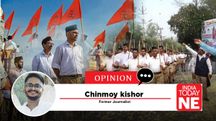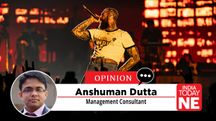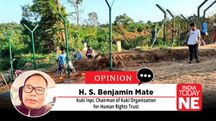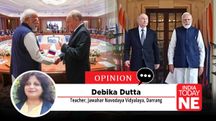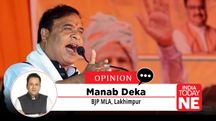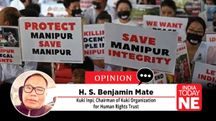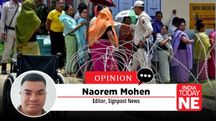Forgiving the Past, People Welcome Muivah to Heal Manipur
Thuingaleng Muivah’s return to his native village of Somdal in Manipur’s Ukhrul district on October 22, 2025, after over five decades of absence, marked a historic moment for a state scarred by ethnic divisions.
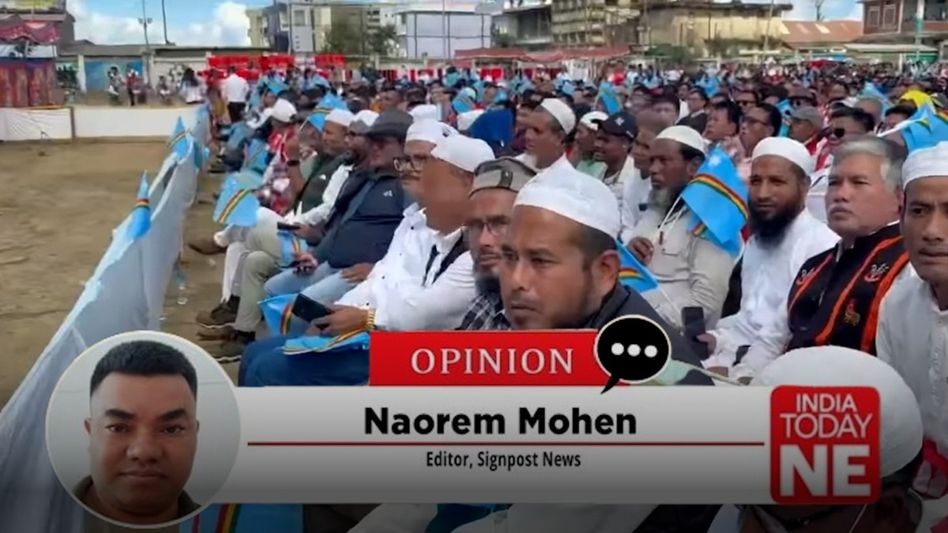
Thuingaleng Muivah’s return to his native village of Somdal in Manipur’s Ukhrul district on October 22, 2025, after over five decades of absence, marked a historic moment for a state scarred by ethnic divisions.
Hundreds lined the roads to TNL Ground, waving and cheering with emotion, as diverse communities—Meiteis, Kukis, Zomis, Pangals (Manipur Muslims), and others—stood shoulder to shoulder to welcome the National Socialist Council of Nagaland-Isak Muivah (NSCN-IM) supremo. Facilitated by non-Naga civil society organizations (CSOs), this collective embrace signaled a rare opportunity for reconciliation amid a history of conflict and mistrust.
After more than five decades of struggle, Muivah’s ceremonial homecoming offered a profound lesson in resilience for Manipur. Critics point to the turbulent legacy of the Naga quest for Greater Nagalim, a polarizing demand for a unified homeland encompassing parts of Manipur that fueled tensions, including the deadly Naga-Kuki clashes of the 1990s and the tragic protests of June 18, 2001, which claimed 18 lives and deepened fractures. The “Idea of Manipur,” emphasising territorial and cultural integrity, emerged as a rallying cry against perceived threats. In 2010, under a Congress-led government, Muivah’s visit attempt was blocked amid fears of unrest.
Fast forward to 2025, under BJP governance and President’s Rule, New Delhi’s decision to allow the return reflects a shift toward dialogue over confrontation. Moments fueled by fear have long pitted neighbors against one another, but the diverse crowd—hands clasped across lines—signals a willingness to forgive for a new Manipur. Muivah now embodies a bridge across fault lines, his once-divisive struggle sparking vital conversations on identity and coexistence.
Also Read: JJM scam must not be politicised: The water ghost ravages every constituency, from BJP to Congress bastions
Muivah’s homecoming was remarkable for the diversity of voices endorsing it. Meitei Leepun, a prominent Meitei socio-cultural organization, described Muivah’s return as a “wise and compassionate decision” by New Delhi. Its chief, Pramot Singh, hailed Muivah as “not only a respected leader of the Naga people but an inspirational and visionary figure admired across communities.”
The organization’s statement emphasized Muivah’s lifelong commitment to the land and its people, framing his struggle as a broader awakening of indigenous consciousness. Meitei Leepun’s call for strengthened Naga-Meitei brotherhood and dialogue for peace highlights a significant shift.
Historically, the Meitei community has viewed the Greater Nagalim demand with suspicion, fearing it threatens Manipur’s territorial integrity. Their warm endorsement of Muivah’s visit signals a willingness to engage in dialogue, prioritizing coexistence over conflict.
The Coordinating Committee on Manipur Integrity (COCOMI), choed this sentiment. COCOMI spokesperson Athouba described Muivah as a “tall leader” and his visit as a “historic moment.” This acknowledgment from a group that has often championed Meitei interests underscores the evolving narrative in Manipur—one where leaders like Muivah are seen not just as Naga icons but as figures of broader significance.
The All Manipur Muslim Organisations Coordinating Committee (AMMOCOC), representing the Pangal community, also extended a warm welcome. The Pangals, often caught in the crossfire of ethnic tensions, have historically maintained a delicate balance in Manipur’s complex socio-political landscape. Their participation in Muivah’s welcome reflects a shared aspiration for peace and a recognition of his role as a unifying figure.
Perhaps most striking was the involvement of Kuki and Zomi organizations, given the painful history of Naga-Kuki clashes. The Zomi Re-Unification Organisation (ZRO) celebrated Muivah’s return as a “moment of joy,” lauding his sacrifices for his people. Similarly, the Eastern Kuki Chiefs Association (EKCA) in Chassad, Kamjong, described the visit as “historic” and praised Muivah’s “tireless efforts” in the Naga political struggle.
Their statements of solidarity with the NSCN-IM and its pursuit of a “peaceful and lasting solution” to the Naga issue are particularly significant. The Kuki and Zomi communities, scarred by the violence of the 1990s, have every reason to harbor resentment. Yet, their presence in welcoming Muivah speaks to a profound act of reconciliation—a willingness to forgive, if not forget, for the sake of a shared future.
Muivah’s gift to Manipur lies not in a singular act or policy but in the opportunity his return creates. His presence, embraced by Meiteis, Kukis, Zomis, Pangals, and others, invites the state to rise above old grievances. It challenges every community to see each other not as rivals but as kin, bound by a shared history and a common future. The beauty of Manipur, as Meitei Leepun aptly noted, lies in its diversity. Preserving that diversity with dignity and respect is the foundation of a new Manipur.
The wounds of Manipur’s past will not heal overnight. The memories of violence, loss, and mistrust run deep. But this unity suggests forgiveness is possible.
It is an invitation to continue the dialogue, to address unresolved grievances, and to build a Manipur where every voice is heard. The state’s future depends on its ability to sustain this spirit of unity, to transform this historic homecoming into a lasting legacy of peace.
The diverse crowd that greeted him—hands clasped across community lines—was a quiet rebellion against the divisions of the past. It was a collective exhale, a step toward mending what has been broken.
For Muivah, it’s a chance to redefine his legacy through inclusive dialogue. For Manipur, it’s a call to action—sustaining this spirit to transform the homecoming into lasting peace. In the end, it’s about the state’s journey toward healing, where every heart finds home.
Copyright©2025 Living Media India Limited. For reprint rights: Syndications Today
